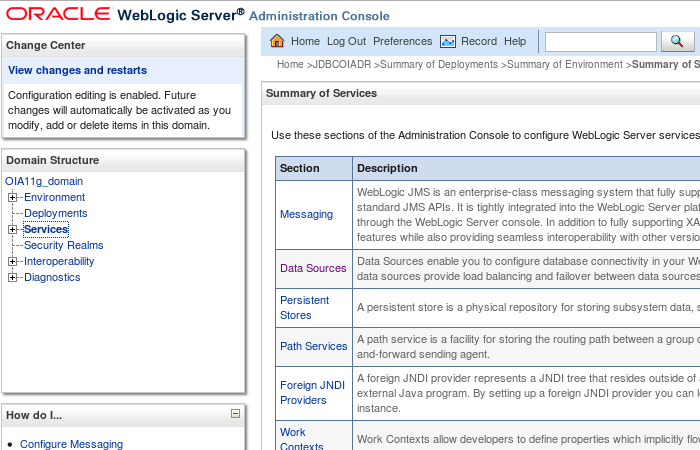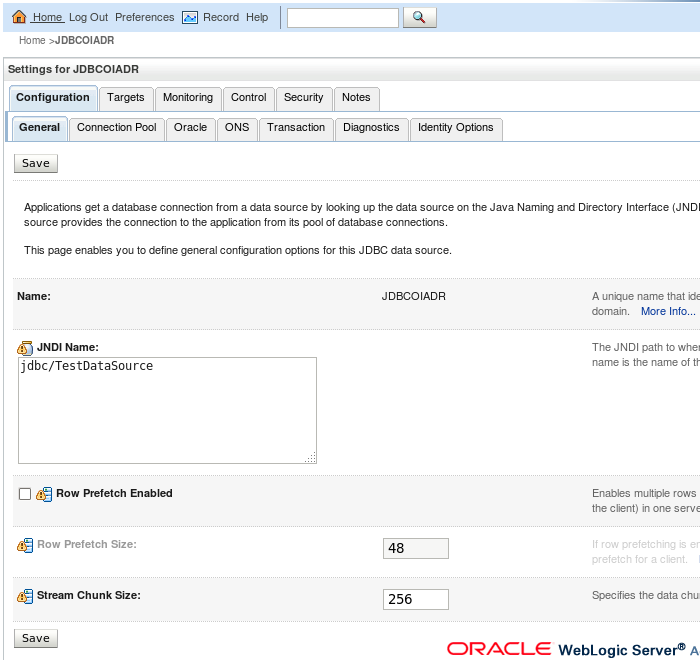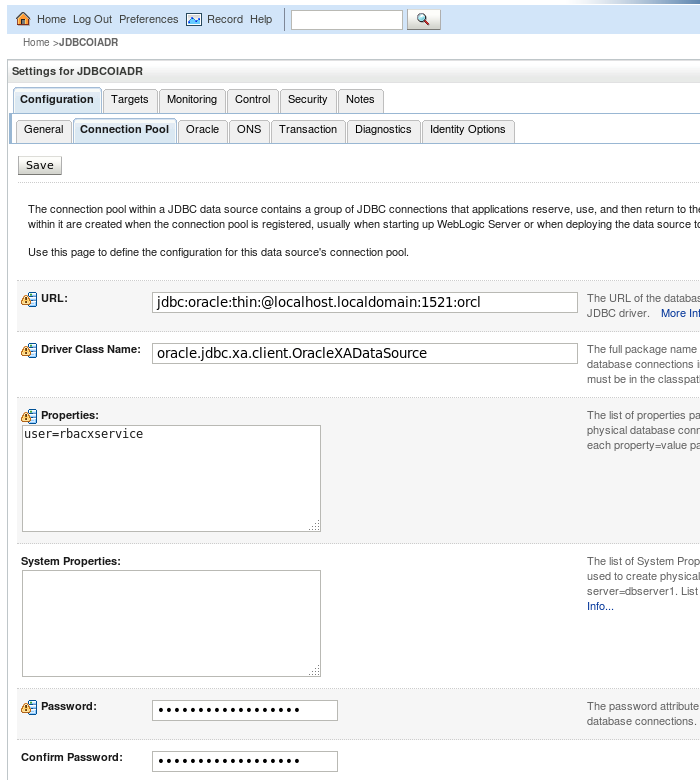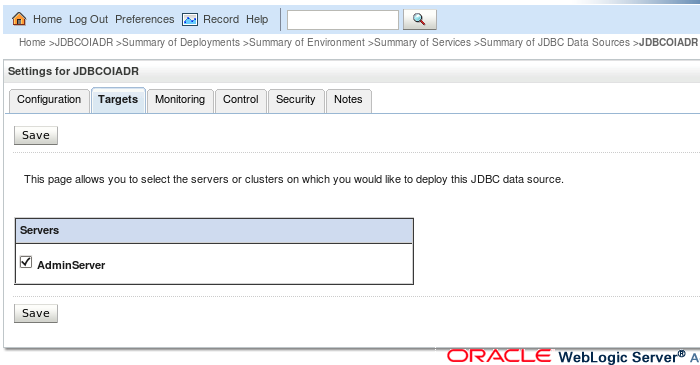Java Naming and Directory Interface (JNDI) is basically a functionality in Java for looking up "things", which can be anything you want. This blog is about how to create a data source for accessing the database and we use the JNDI to create the initial context connection. There are however many other options with JNDI other than connecting to databases, such as LDAP, DNS, RMI, COBRA etc.
This works by defining a 'thing' on the server (in this blog we're creating a data store) to then allow the retrieval of objects from the server. This this information can then be used within your application to perform tasks (in this example it's using a data source to connect to a database).
JNDI basically bridges the J2EE components together and provides your applications the dynamic expansion. By allowing the application server to be responsible for the database connection allows your application to expand without scalable constraints or constant changes.
JNDI is fairly straightforward, initially you obtain a JNDI naming context, which is simply a connection to your application server, then you can use this connection to lookup a specific 'thing' (data source), then you use the connection to the application server to send over queries and the application server will send back an array of results (strings) of which you can use within your application.
In this blog, a java class is created to call the Weblogic data store, of which will create an initial context and the SQL scripts is sent to retrieve the information within a string array
Firstly, log into WLS and go to services -- data sources

Next, click create and provide a name. Then within the configuration tab, provide a JNDI Name. (in this example it's called jdbc/TestDataSource).

Within the connection pool, add in the URL, driver class name and the password for the user. The generator will place the information into the fields as highlighted in the screenshot.

Also, make sure you assign the data source to a specific target (in this example I've assigned the data source to the Admin server). This avoids the misleading exception error:
The Exception: javax.naming.NameNotFoundException: Unable to resolve 'jdbc.TestDataSource'. Resolved 'jdbc' [Root exception is javax.naming.NameNotFoundException:

Once that is setup, you're ready to create the java code to connect to the data source.
The code...
import java.io.*;
import java.sql.*;
import java.util.*;
import javax.naming.*;
public class testJNDI {
static Connection connection = null;
public static void main(String [] args) throws IOException, NamingException, SQLException{
getSQLData(args);
}
public static void getSQLData(String [] args) throws IOException, NamingException, SQLException{
Statement st = null;
ResultSet rs = null;
try{
FileInputStream fis = new FileInputStream(args[0]);
Properties props = new Properties();
props.load(fis);
Hashtable env = new Hashtable();
env.put(Context.INITIAL_CONTEXT_FACTORY,"weblogic.jndi.WLInitialContextFactory");
env.put(Context.PROVIDER_URL,"t3://172.16.101.244:7100");
Context context = new InitialContext(env);
env.put(Context.INITIAL_CONTEXT_FACTORY,"weblogic.jndi.WLInitialContextFactory");
env.put(Context.PROVIDER_URL,"t3://172.16.101.244:7100");
Context context = new InitialContext(env);
DataSource dataSource =(DataSource)context.lookup("jdbc/TestDataSource");
connection = dataSource.getConnection();
System.out.println("Connection to \"" + dataSource + "\" Established: " + connection.toString());
st = connection.createStatement();
String query = "SELECT * FROM RBACXSERVICE.GLOBALUSERS";
rs = st.executeQuery(query);
while(rs.next())
{
String userLogin = rs.getString("globaluserkey");
System.out.println(userLogin);
}
}catch(Exception e){
System.out.println("Exception: "+e);
}finally{
connection.close();
}
}
}
About the author
 Daniel is a Technical Manager with over 10 years of consulting expertise in the Identity and Access Management space.
Daniel is a Technical Manager with over 10 years of consulting expertise in the Identity and Access Management space.Daniel has built from scratch this blog as well as technicalconfessions.com
Follow Daniel on twitter @nervouswiggles
Comments
Other Posts
AS I was migrating my environment into an S3 environment, I wanted to leverage off the SES services that AWS provide, more specifically, to leverage the off the SMTP functionality by sending an email via PHP
Read More...
The WeMos D1 is a ESP8266 WiFi based board is an extension to the current out-of-the-box library that comes with the Arduino installation. Because of this, you need to import in the libraries as well as acknowledging the specific board. This process is highly confusion with a number of different individuals talking about a number of different ways to integrate.
Read More...
NameID element must be present as part of the Subject in the Response message, please enable it in the IDP configuration.
Read More...
For what I see, there's not too many supportive documentations out there that will demonstrate how provision AD group membership with the ICF connector using OpenIDM. The use of the special ldapGroups attribute is not explained anywhere in the Integrators guides to to the date of this blog. This quick blog identifies the tasks required to provision AD group membership from OpenIDM to AD using the LDAP ICF connector. However this doesn't really explain what ldapGroups actually does and there's no real worked example of how to go from an Assignment to ldapGroups to an assigned group in AD. I wrote up a wiki article for my own reference: AD group memberships automatically to users This is just my view, others may disagree, but I think the implementation experience could be improved with some more documentation and a more detailed example here.
Read More...
In the past, the similar error occurred though for the Oracle Identity Management solution. invalidcredentialexception remote framework key is invalid Because they all share the ICF connector framework, the error/solution would be the same.
Read More...
org.forgerock.script.exception.ScriptCompilationException: missing ; before statement
Read More...
ForgeRock IDM - org.forgerock.script.exception.ScriptCompilationException: missing ; before statement
Read More...
When performing the attempt of a reconciliation from ForgeRock IDM to Active Directory, I would get the following error
Read More...
In the past, the similar error occurred though for the Oracle Identity Management solution. invalidcredentialexception remote framework key is invalid Because they all share the ICF connector framework, the error/solution would be the same.
Read More...
During the reconcilation from OpenIDM to the ICF google apps connector, the following error response would occur. ERROR Caused by com.google.api.client.auth.oauth2.TokenResponseException 400 Bad Request - invalid_grant
Read More...

